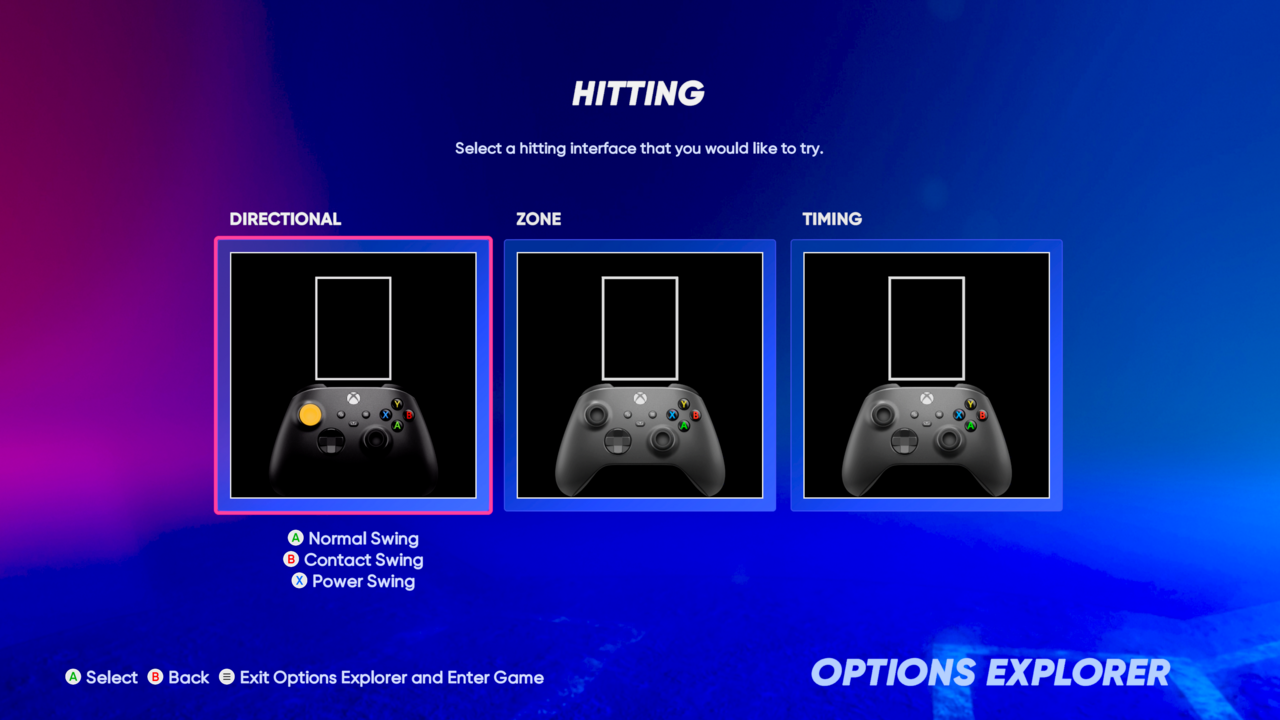MLB The Show 22 Best Hitting Controls
MLB The Show 22 offers a wide range of batting controls. But which one is best for you? Here's our suggestion.
Every year, MLB The Show 22 offers more control schemes than just about any other sports sim. That means you have tons of options across batting, fielding, pitching, and baserunning. In this guide, we'll walk you through all of the hitting controls so you can learn about the pros and cons of each and eventually pick the control scheme that's right for you. Here's our guide on the best batting controls in MLB The Show 22.
MLB The Show - Hitting controls explained
There are three control schemes for hitting, and they range from being arcade-like to something more like a simulation. Your preference will likely come down to how involved you want to be at the plate. There are no objective wrong answers, but you may find that having more or less control of bat placement is the right tactic for you.
Before we jump in, note that the three control schemes share one thing in common: With any mode you choose, you'll get to use a normal swing, contact swing, or power swing. The controls on each platform are as follows:
- Normal swing: A (Xbox) Cross (PlayStation), B (Switch)
- Contact swing: B (Xbox), Circle (Playstation), A (Switch)
- Power swing: X (Xbox) Square (PlayStation), Y (Switch)
A normal swing is just that, the swing you may use when leading off an inning or when no in-game context--such as runners in scoring position or a fatigued pitcher at the mound--demands other kinds of swinging. A contact swing is ideal for when you're down in the count and need to at least foul something off to stay alive, or for when you're looking to advance runners--maybe even at your batter's expense. A power swing should be used mostly by power hitters, of course, but if a pitcher is gassed, their pitch quality will suffer and they may leave a ball hanging over the sweet spot of the plate. In these moments, a power swing makes for a good choice, as well. Make 'em pay.

Directional
Directional hitting gives you eight points of emphasis from which to choose when you're about to swing. By pointing the left stick toward the top, bottom, left, right, or one of four corners of the batter's box, you'll favor making contact with the ball in that portion of the box and driving it in that direction. This is helpful if you've got a good eye for ball placement and an understanding of where you'll want to go with a ball. Needing a fly ball to allow a runner to tag-up, for example, means pointing the left stick up and improving your chances of driving a ball into the air. Conversely, targeting a ball to a particular outfield pocket may help advance runners or keep the ball out of likely double-play territory.
This mode of play is dependent on both your situational baseball IQ and your ability to read a pitch, which is naturally going to be harder the better a pitcher's "stuff" is. But if you think you've got what it takes, this is the most popular hitting control scheme for good reason.
Zone
Zone hitting is sort of the more nuanced version of directional hitting. Rather than splitting the batter's box into eight sections, you're meant to trace the eventual landing spot of each pitch using a circle shown inside the batter's box. Controlling this circle with the left stick, your goal is to center the circle on the position of the pitch as it crosses the plate.
This is a bit harder to pull off than directional hitting, as it requires an even faster response time because you'll effectively be chasing the ball in a fraction of a second. However, it's also the deepest of all hitting control schemes as it allows for a keen hitter's eye to make precise contact at every at-bat. This is the most sim-like control scheme of the three and best used by vets of the series and/or genre.
Timing
Timing controls are the most hands-off, and thus are the easiest to pick up for beginners or players who don't want the depth the other two modes offer. With timing controls, you simply time your swing to when the ball crosses the plate. That's it. It's rather old-school in this way and may appeal most to players who haven't played a baseball game in years. If you don't want to worry about bat placement or fine-tuning where you make contact, you can focus solely on timing and let your player's attributes take the driver's seat in deciding how well you make contact.
Got a news tip or want to contact us directly? Email news@gamespot.com
Join the conversation